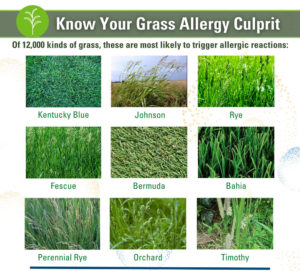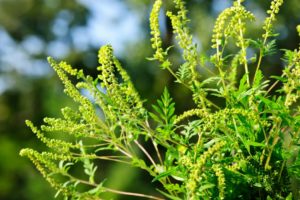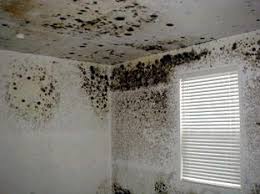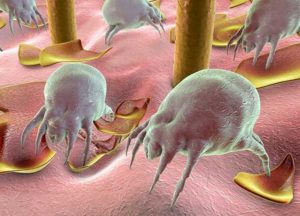Seasonal Allergies
Seasonal allergies are the same as food allergies. The only difference is that the allergen is (most commonly) pollen instead of a food.
Pollen is an airborne allergen that can affect our health. Pollen grains are tiny “seeds” dispersed from flowering plants, trees, grass, and weeds. The amount and type of pollen in the air depends on the season and geographic region. Though pollen counts are typically higher during the warmer seasons, some plants pollinate year-round.
The symptoms people with seasonal allergies can also be different than those with food allergies. This includes but is not limited to: coughing, runny noses, and itchy, watery eyes. Seasonal allergies aren’t exclusive to spring or summer; they can persist throughout the year. Depending on your specific allergens, allergic reactions can peak even during the winter months.

Pollen and other common allergens
01.
Tree Pollen

Common trggers include: birch, elm, cedar, cypress, pine, olive, ash, oak, sycamore, walnut, and mulberry trees.
02.
Grass Pollen

03.
Ragweed

Ragweeds are flowering plants in the genus Ambrosia in the aster family, Asteraceae. They are distributed in the tropical and subtropical regions of the Americas, especially North America, where the origin and center of diversity of the genus are in the southwestern United States and northwestern Mexico.
04.
Mold Spores

When you inhale tiny, airborne mold spores, your body recognizes them as foreign invaders and develops allergy-causing antibodies to fight them. Exposure to mold spores can cause a reaction right away, or the reaction can be delayed.
05.
Dust

These microscopic bugs are perhaps the most common cause of dust allergies. More precisely, the protein in their feces causes allergies. Dust mites dine on human skin flakes and live on bedding, mattresses, carpet, upholstered furniture, and curtains. These tiny pests can cause an oversized amount of misery.
06.
Drugs

